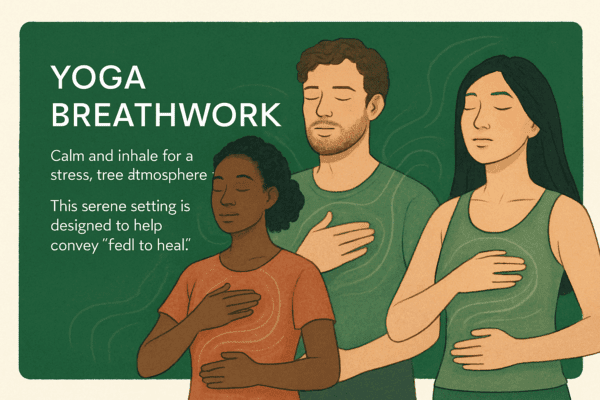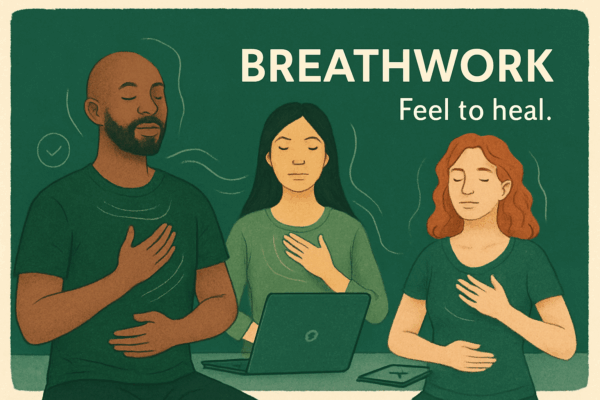Sound has been a part of human healing practices for centuries, weaving its way through cultures and traditions as a tool of transformation. Today, the use of sound to heal trauma is gaining recognition for its soothing and restorative potential. Sound healing offers an alternative path to healing where one can safely process and release deep-seated emotional trauma. By tapping into the natural frequencies and vibrations around us, sound becomes a gentle healer, providing a sanctuary where the mind and body can find balance.
Breathwork and sound healing make a natural pairing, as both practices center around the power of the present moment. Combining the rhythmic practice of breathwork with the auditory experience of sound creates a powerful synergy. This partnership harnesses the body’s natural ability to heal by reducing stress, opening emotional pathways, and encouraging a state of mindfulness. The calming effects of sound help enhance the experience of breathwork, allowing individuals to journey deeper into their own healing processes.
The Science Behind Sound Healing
Sound operates through waves and frequencies that resonate with the body in astonishing ways. When we experience sound, either through listening or feeling its vibrations, it can create shifts in our mental and emotional state. This happens because sound frequencies can synchronize brainwave patterns, encouraging relaxation and reducing the mental noise that often accompanies stress and trauma.
But how exactly does this work? Picture a tuning fork—when struck, it produces a specific frequency. Similarly, singing bowls, gongs, and even the human voice produce vibrations that circulate through the body. When these waves interact with us, they promote a sense of peace and encourage the release of emotional blockages.
Current research supports the idea that sound can positively affect mental and physical well-being. For example, listening to soothing music or nature sounds has been associated with lower anxiety levels and improved self-awareness. These studies suggest sound healing may serve as a valuable tool in trauma therapy. It encourages individuals to engage with their emotions in a non-verbal and non-threatening way, creating new avenues for recovery.
In conclusion, understanding the science behind sound healing reveals a promising method for supporting trauma recovery. As individuals explore these practices, they may find renewed hope and ways to navigate through their emotional landscapes with greater ease and understanding. Sound not only serves as a bridge to healing but also as a reminder of the body’s innate wisdom to restore itself.
Techniques for Using Sound to Heal Trauma
Exploring sound therapy begins with simple yet powerful techniques like chanting and vocal toning. These methods enable individuals to engage directly with their own voices, which carry unique frequencies. Chanting can help clear mental clutter, providing a steadier focus and embracing a soothing rhythm that encourages emotional release. With vocal toning, you explore varying pitches and patterns, allowing your body to resonate with different vibrations, opening pathways to self-expression and healing.
Using musical instruments such as singing bowls, gongs, and tuning forks can enhance this sound journey. Each instrument generates distinct vibrations that interact with the body in harmonizing ways. The resonant tones aid in reducing tension and creating a state of calm where healing can thrive. Instruments like these offer an engaging sensory experience, drawing individuals into a meditative state that fosters reflection and recovery.
Listening to healing music and nature sounds is another way to immerse oneself in sound therapy. Music composed for relaxation and mindfulness can create environments where stress melts away. Nature sounds, like the gentle ripple of a stream or bird calls, can guide the mind into a peaceful realm, where trauma can be addressed with gentle awareness.
Integrating Sound with Breathwork in BBTRS
Sound and breathwork together amplify each other, elevating the experience to a new level of healing. This integration adds depth to the practice of BBTRS, promoting a holistic approach to trauma recovery. Sound aids breathwork sessions by providing a rhythmic foundation that the breath can dance along with, helping participants maintain focus and rhythm.
When you combine sound and breath activities, following practical guidelines can enhance their effectiveness:
– Begin with a sound meditation using gentle instruments or recorded music.
– Focus on synchronizing your breath with the sound; let the rhythm guide your inhalations and exhalations.
– Encourage deep, intentional breathing that follows the rise and fall of the sound waves.
– Conclude with a period of silence, allowing the mind to absorb the experience.
Participants often discover that sound deepens their breathwork practice. Adopting these combined methods fosters a healing environment where emotions can be processed more thoroughly. Individuals often report feeling more centered and grounded, highlighting sound’s role in enhancing emotional resilience.
Embrace the Healing Power of Sound
Sound healing and breathwork create a tapestry of serenity that helps individuals navigate trauma with newfound clarity. This union brings forth benefits for both the mind and body, from alleviating stress to nurturing emotional well-being. By embracing sound as a therapeutic tool, you not only engage with the present but also pave a path for a more harmonious future.
As you explore these techniques, consider the journey an invitation to reconnect with your inner landscape. The rhythms and melodies you encounter become companions, providing support through life’s ebbs and flows. Whether incorporating chanting, playing instruments, or immersing yourself in calming sounds, sound therapy offers a nurturing space to heal, grow, and transform.
If you’re looking to deepen your practice and help others on their healing journey, consider becoming a breathwork facilitator. The Biodynamic Breathwork Institute offers special skills courses to equip you with the tools you need. Explore how you can master these techniques and create transformative experiences today.





